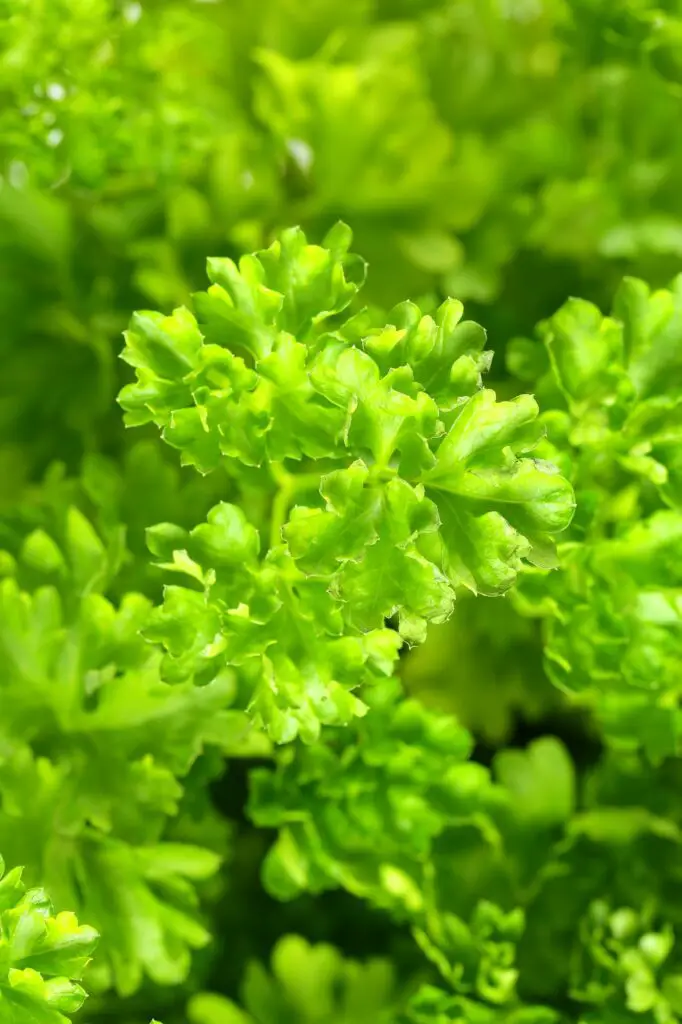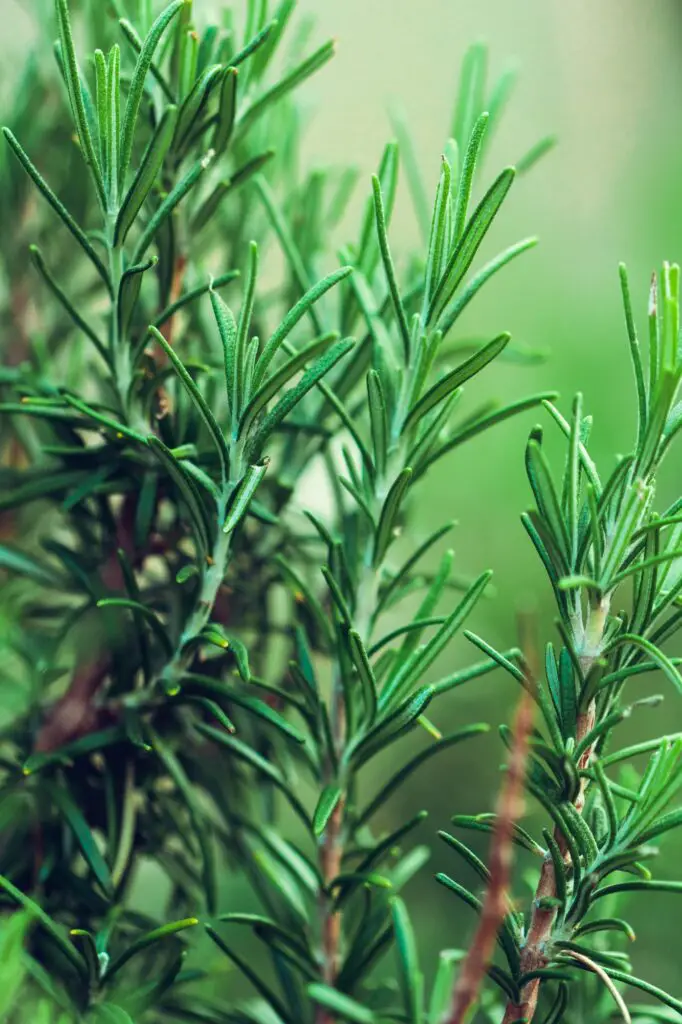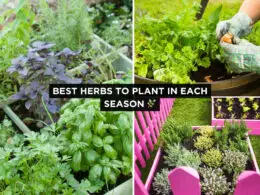In This Article Show
Welcome to the green world of indoor herb gardening, a practice that allows you to enjoy fresh, aromatic herbs all year round, right from the comfort of your home. With over 13 years of gardening, I’ve seen firsthand how growing herbs indoors can transform your cooking, brighten your living spaces, and even improve your mental health.
Whether you’re a seasoned gardener or just starting, this guide will walk you through the essentials of selecting, nurturing, and harvesting herbs that thrive indoors.
From basil to lemon balm, get ready to add flavor and greenery to your life without needing a backyard garden.
Choosing the Right Herbs for Indoor Gardening
When it comes to indoor herb gardening, not all herbs are created equal. The key to a flourishing indoor garden lies in selecting the right herbs that can adapt well to indoor conditions.
Three critical factors to consider are light requirements, water needs, and space considerations. Herbs vary in their need for sunlight, with some thriving in bright, direct light, while others prefer more moderate lighting conditions.
Watering needs are equally important; overwatering is as detrimental as under-watering. Lastly, consider the space you have available.
Get Gardening For Beginners
Our new EBOOK shows newcomers and green thumbs alike a step by step guide to growing the garden of their dreams.
Some herbs can grow quite large, while others are well-suited to the confined spaces of indoor pots. Choosing the right herb varieties can make your indoor gardening experience both enjoyable and rewarding.
10 Herbs That Thrive Indoors
1. Basil

A favorite among chefs and gardeners alike, basil requires plenty of sunlight, so a south-facing window is ideal. Water when the top inch of soil feels dry, and you’ll have a constant supply of this aromatic herb. Basil is perfect for pesto, salads, and adding a fresh touch to dishes.
2. Mint

Known for its vigorous growth, mint can easily take over indoor spaces if not contained. Plant it in its pot and keep the soil consistently moist. To prevent it from overtaking other plants, regular pruning is necessary. Its refreshing leaves are great in teas, cocktails, and culinary dishes.
3. Parsley

This versatile herb prefers rich, moist soil and can thrive in both full light and partial shade. Parsley is a biennial plant but is often grown as an annual. Use it to garnish dishes, in soups, and a wide range of culinary recipes for a fresh flavor.
4. Cilantro

Cilantro loves light but can bolt quickly if it gets too hot, so indirect light can be better. Keep the soil moist for healthy growth. Harvesting cilantro regularly can encourage a continuous supply. It’s indispensable in salsa, guacamole, and Asian, Latin, and Indian cuisines.
5. Chives

Chives do well in moderately bright light and well-drained soil. They’re not too picky about pot size but make sure there’s adequate room for growth. Snip the leaves with scissors to avoid damaging the plant, and enjoy the mild onion flavor in salads, soups, and as a garnish on many dishes.
6. Thyme

Thyme thrives under full sunlight, so placing it near a sunny window is ideal. Allow the soil to dry out completely between watering, as thyme prefers a drier environment. For bushier growth, trim the tips regularly. This herb is a staple in Mediterranean cuisine, adding depth to soups, stews, and roasted dishes.
Get Gardening For Beginners
Our new EBOOK shows newcomers and green thumbs alike a step by step guide to growing the garden of their dreams.
7. Rosemary

This robust herb prefers bright light and well-draining soil. To avoid overwatering, let the top inch of soil dry out before watering again. Rosemary does well in larger pots that accommodate its root growth and prevent it from becoming root-bound. Its needle-like leaves are perfect for flavoring meats, soups, and bread.
8. Oregano

Oregano requires a sunny spot and soil that mimics its native Mediterranean environment—well-draining and moderately fertile. It’s easy to propagate from cuttings to expand your herb garden. Regular harvesting encourages fuller plants. Oregano is indispensable in Italian, Mexican, and Greek cooking, offering a warm, balsamic flavor.
9. Sage

Sage prefers strong light and occasional watering, allowing the soil to dry out between waterings. It’s less demanding regarding soil quality but does require good drainage. Harvest leaves sparingly to encourage continuous growth throughout the year. Sage’s earthy flavor makes it a classic in stuffings, meats, and savory dishes.
10. Lemon Balm

A member of the mint family, lemon balm can spread quickly if not contained. Planting it in a separate pot helps manage its growth. It prefers partial shade to full sun and likes moist, well-drained soil. Use its lemon-scented leaves in teas, and desserts, and to add a fresh lemon twist to salads and drinks.
These herbs bring unique flavors and aromas to your indoor garden and kitchen. Understanding and catering to their specific needs allows you to enjoy a vibrant and productive herb garden inside your home.
Whether you’re garnishing a dish, brewing a cup of herbal tea, or simply enjoying the greenery, these herbs will surely enrich your indoor gardening experience.
Common Challenges in Indoor Herb Gardening and How to Overcome Them
Indoor herb gardening is a rewarding endeavor, but like all gardening, it comes with its set of challenges. Understanding these common issues and knowing how to address them can ensure the health and productivity of your indoor garden.
1. Lack of Light
Challenge
Herbs generally require plenty of sunlight, often more than what is available indoors, especially during the winter months.
Solution
Position your herb garden near windows that receive a lot of sunlight, ideally south-facing ones. If natural light is insufficient, consider using grow lights. LED grow lights or fluorescent bulbs can provide the necessary spectrum of light for herbs to photosynthesize and thrive. Keep lights on for about 14–16 hours a day to mimic natural sunlight conditions.
2. Overwatering
Challenge
Overwatering is a common mistake in indoor herb gardening, leading to root rot and fungal diseases.
Solution
Ensure your pots have drainage holes and use well-draining soil mixes designed for container gardening. Before watering, check the soil moisture by sticking your finger about an inch deep into the soil. If it feels dry, it’s time to water; if it feels moist, wait a day or two. Watering schedules will vary with the season, requiring less frequent watering in the winter months.
3. Pests
Challenge
Indoor herbs can still be susceptible to pests like aphids, spider mites, and fungus gnats, which can be harder to control indoors.
Solution
Regularly inspect your plants for signs of pests and treat infestations early. Neem oil, insecticidal soaps, and manual removal (like wiping leaves with a damp cloth) can be effective against many common pests.
Prevent pests by maintaining good air circulation around your plants and avoiding overwatering. Also, quarantining new plants before introducing them to your indoor garden can help prevent the spread of pests.
Wrapping it up
You can enjoy a lush and productive indoor herb garden by addressing these common challenges with the right solutions and preventive measures. Remember, the key to indoor gardening success is understanding your plants’ specific needs and creating an environment that mimics their natural growing conditions as closely as possible.










